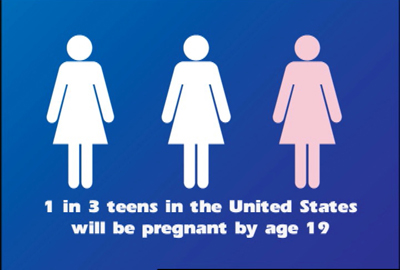Teen Sex Statistics & Sex Facts
One of the things that provides many parents concern is teen sex. Most parents worry about whether their teenagers are behaving responsibly when it comes to sexual intercourse. Indeed, from worries about unplanned pregnancies to concerns over sexually transmitted diseases, many parents worry about how sexually active their teens are.
And, indeed, there is some cause for alarm. The Guttmacher Institute guttmacher.org reports that the United States has the highest levels of teen pregnancy among developed nations. This is hardly surprising, since nearly 75 percent of teenagers have had intercourse by the time they turn 20; only 15 percent report remaining virgins until the age of 21. Additionally, the Institute reports that teens in the US are more likely to have sex before the age of 15, and to have more than one partner in a year, than teenagers in Sweden, France, Canada and the United Kingdom.
However, there is some good news. Child Trends Data Bank childtrendsdatabank.org reports that condom use is increasing. The reported instances of having protected sex have risen from 46 percent in 1995 to 63 percent in 2005, and was 60 percent in 2011. (Child Trends reports that condom use has remained steady from 2005 to 2007.) Birth control use by teenage girls, however, has not followed this trend. Birth control pill use has remained steady at somewhere between 16 and 18 percent since 1993, and fluctuated between 16 and 20 percent since. This probably accounts for teen sex statistics that show that just under 33 percent of teen girls become pregnant (according to Teen Pregnancy Statistics http://www.pregnantteenhelp.org). The CDC has since reported that in 2011 the live birth rate for teens aged 15-19 years is at a rate of 31.3 per 1,000 women.
With a teen pregnancy rate that is nearly twice the rate of that in other developed countries, many parents rightfully worry what can be done. Interestingly, despite a recent government push for abstinence only sex education is schools, teen pregnancy statistics, and teen sex statistics remain in line with trends. As a result, the Kaiser Family Foundation http://www.kff.org reports, 80 percent of parents think that contraception and protective practices (such as condom use) should be taught as part of a comprehensive sex education course.
Teen sex stats remain relatively stable, but intercourse has dropped to 66.7 percent among 12th graders in the US to 60.3 percent. The Guttmacher Institute found that 50 percent of teens between the ages of 15 and 19 in the US have had oral sex . The indication is that oral sex is beginning to be seen as an alternative to intercourse. And, even though this can prevent come teen pregnancies, many teenagers are under-informed with regard to the fact that STDs can still be caught through oral sex.
The teen sex stats that we see today should serve as a reminder that teenagers need to be guided. They need education and knowledge of what’s available in order to help combat teen pregnancy and STDs. Teenagers should understand that there are physical, psychological and emotional effects that come with sex. They should also be taught that the choices they make now can affect them later in life. But this teaching should not be done with fear.
Teen sex stats show that making sex forbidden doesn’t have an impact on the trends. Perhaps treating teenagers as adults, with respect for their intelligence and decision making ability can help where other methods have so far failed to stem the tide of teen pregnancy and sexually transmitted diseases in the US.

